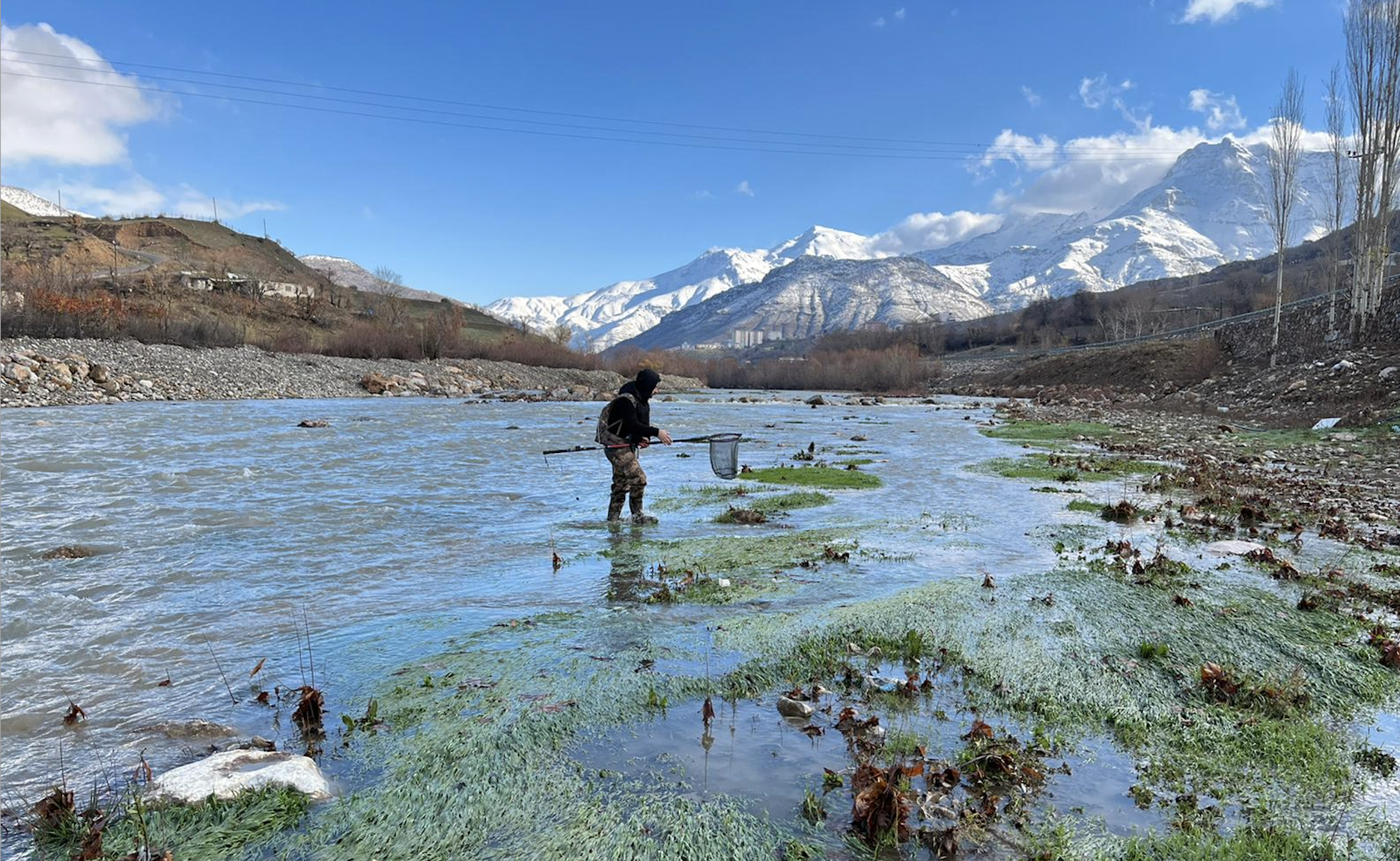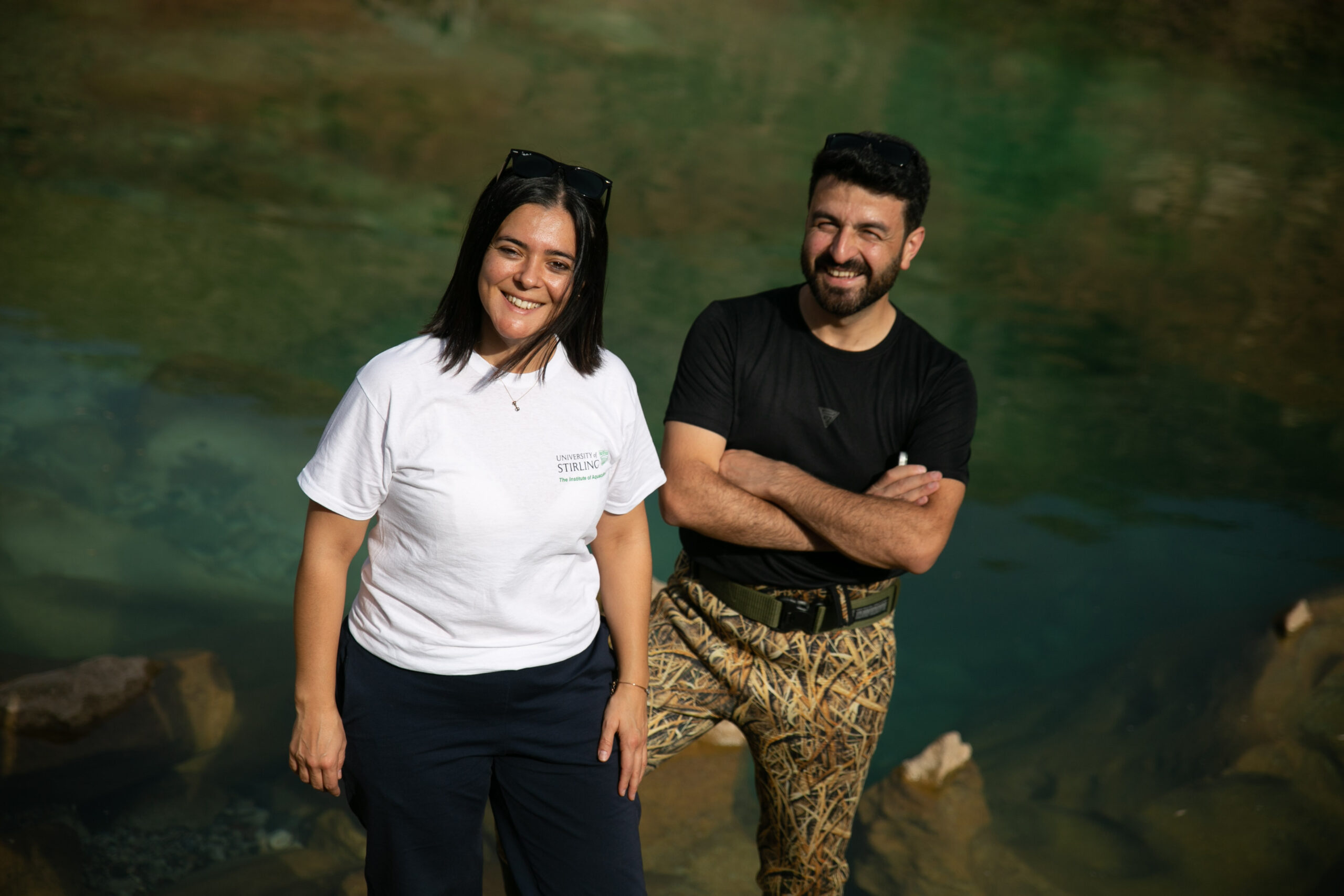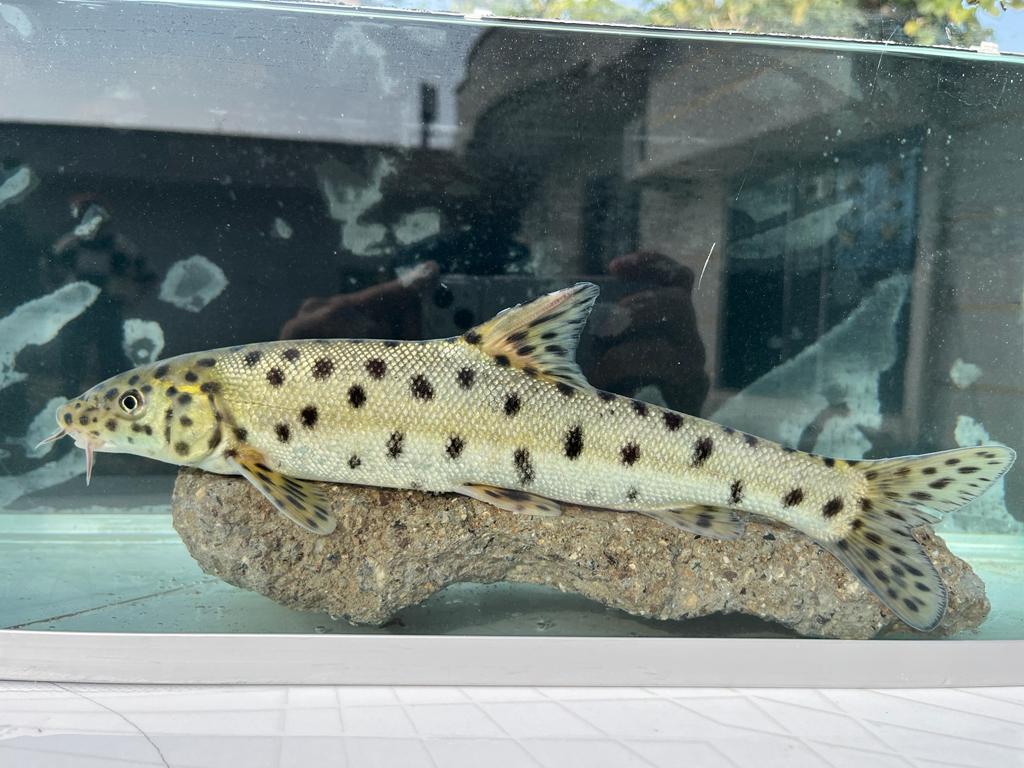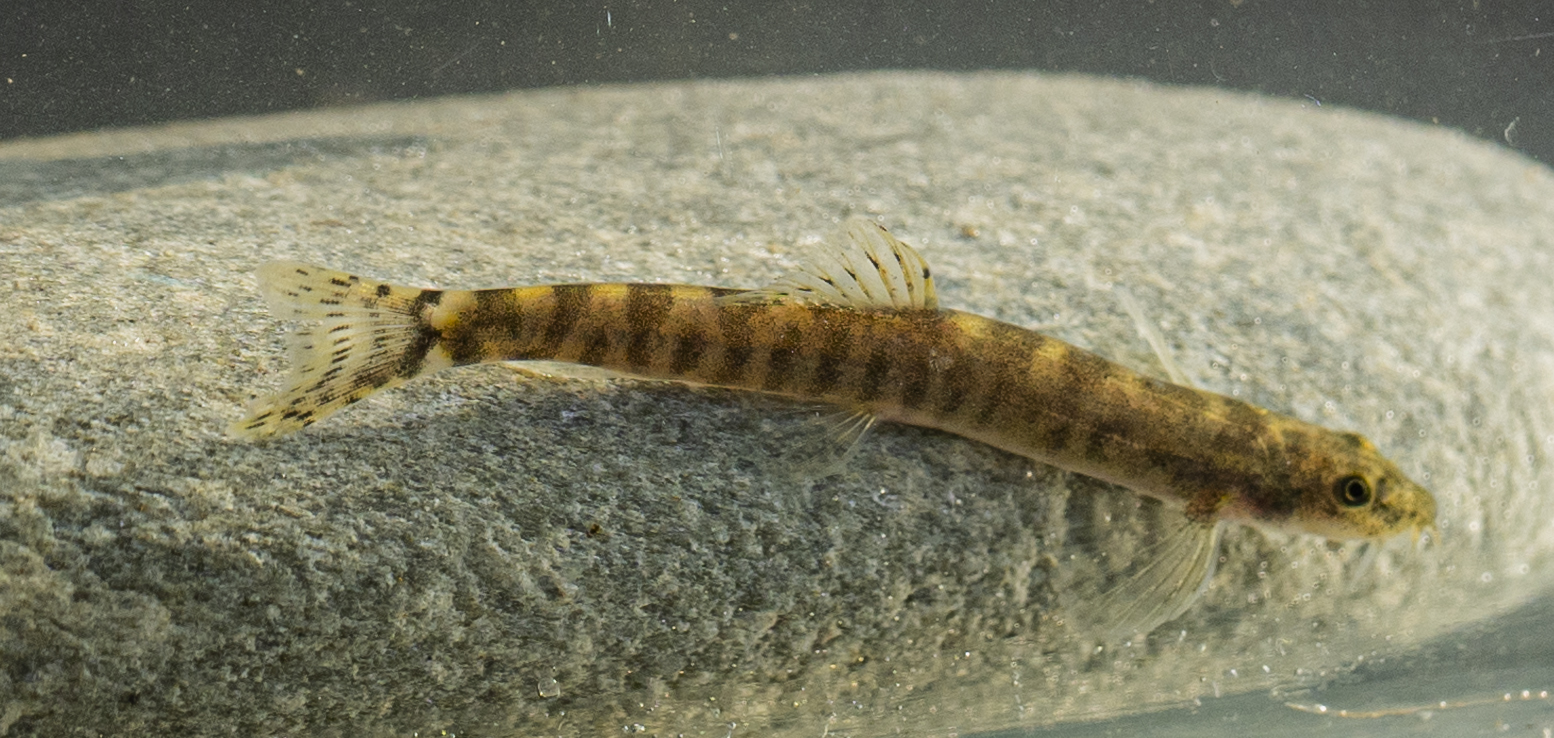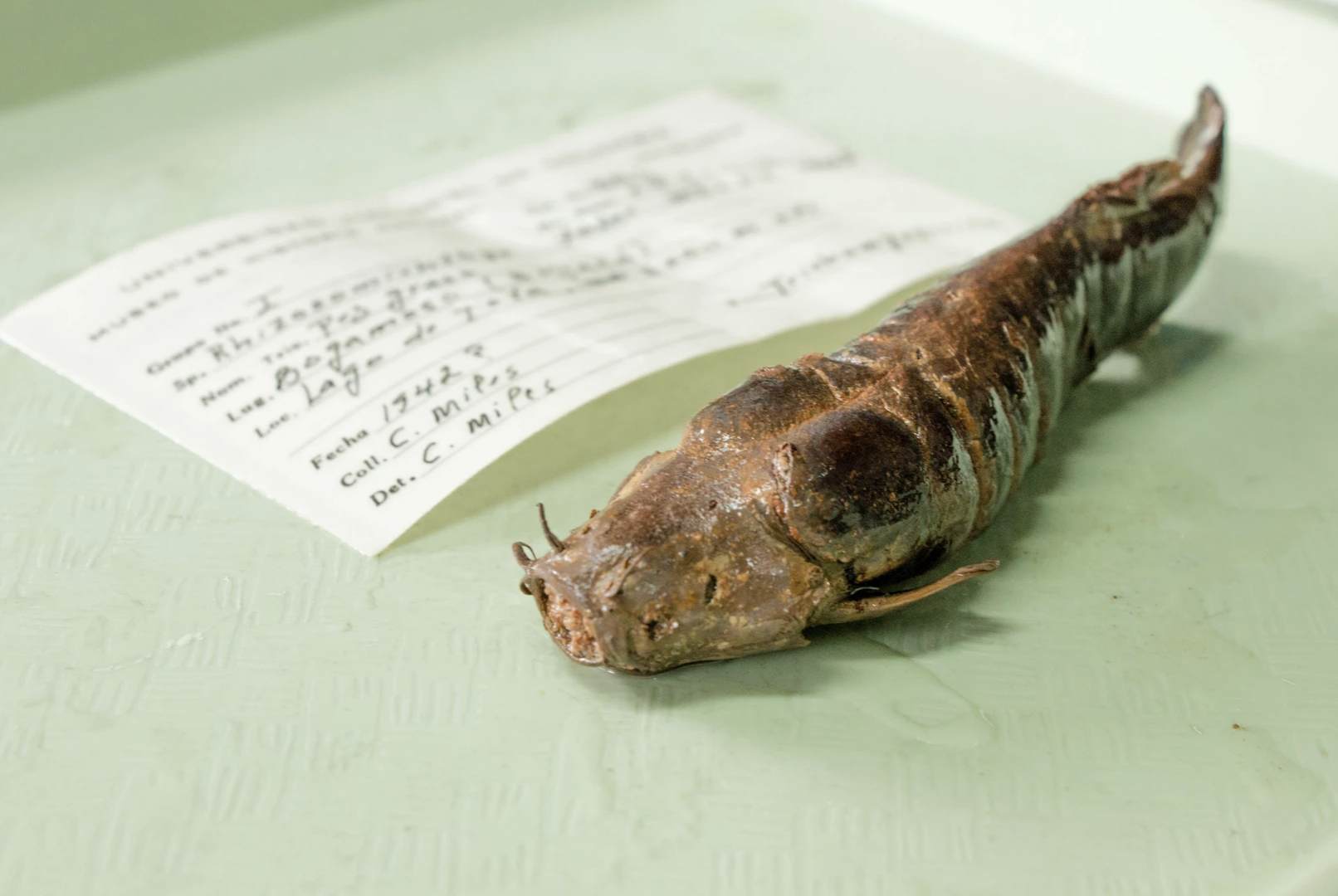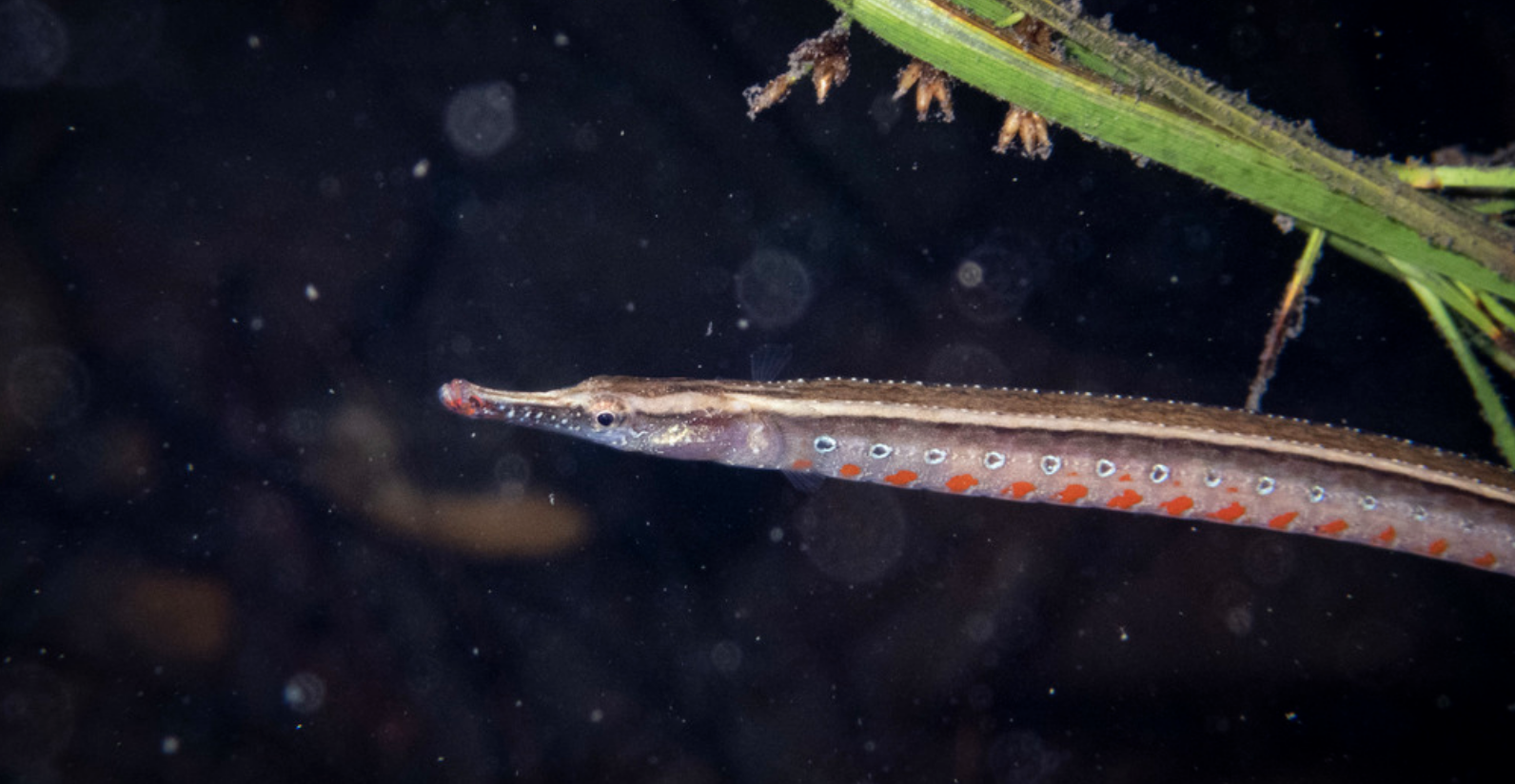© Münevver Oral
Dr Kaya and Dr Oral return to Batman
They were hoping to conduct research into the Batman River loach’s range and distribution, but fierce winter weather forced a rethink.
By Michael Edmondstone
In late December 2021, Dr Cüneyt Kaya and Dr Münevver Oral returned to the Batman – Diyarbakir region of Southeast Turkey. They were keen to conduct further research into the range and distribution of the Batman River loach, and wanted to get the work wrapped up before winter took hold. They arrived on December 18th to find snows had arrived unseasonally early. To add to the challenge, the streams were turbid and fast-flowing after heavy and relentless rain. They braved the icy waters for two days before accepting that finding the loach in these conditions was going to be practically impossible.
We caught up with them to learn more about the aims of this expedition, and what they ended up doing instead of the originally-planned field work.
What was the aim of the second expedition to the Han and Sarim streams?
The aim of the second expedition in Batman-Diyarbakir was to draw the range of the loach in both streams, and was mostly triggered by the info we received by local NGOs that there was a hydroelectric power plant (HEPP) due to be built in Sarim. Taking the weather conditions into account, we decided to carry out the expedition asap before the water level got higher due to the heavy rain and snow in the area.
What challenges did you face?
The biggest challenge was the extreme weather conditions: snow started as we were driving from Rize to Diyarbakir on the main motorway, and it kept snowing or raining heavily until the last three days in the area, regardless of what the weather forecast indicated previously.
The worst thing about winter expeditions is that the visibility [of the stream] is very low, due to turbidity, and the water level is high, thus the temperature is cold, which stimulates fish to find safe shelter for tough winter conditions. This is what happened in Diyarbakir and Batman last week.
Once again, we came to the conclusion that we were lucky when we first rediscovered the loach in Oct 2021: the water level was very low because of drought, as well as it being the end of summer. This may explain why previous researchers have failed to find the loach in the area.
We went through a few challenges: the car got stuck on a muddy road on the second day. Luckily, locals were very friendly and helpful and came with two tractors and saved us from the mud, as well as inviting us over to their houses for a hot cup of tea (free of charge, welcome to Turkish hospitality!).
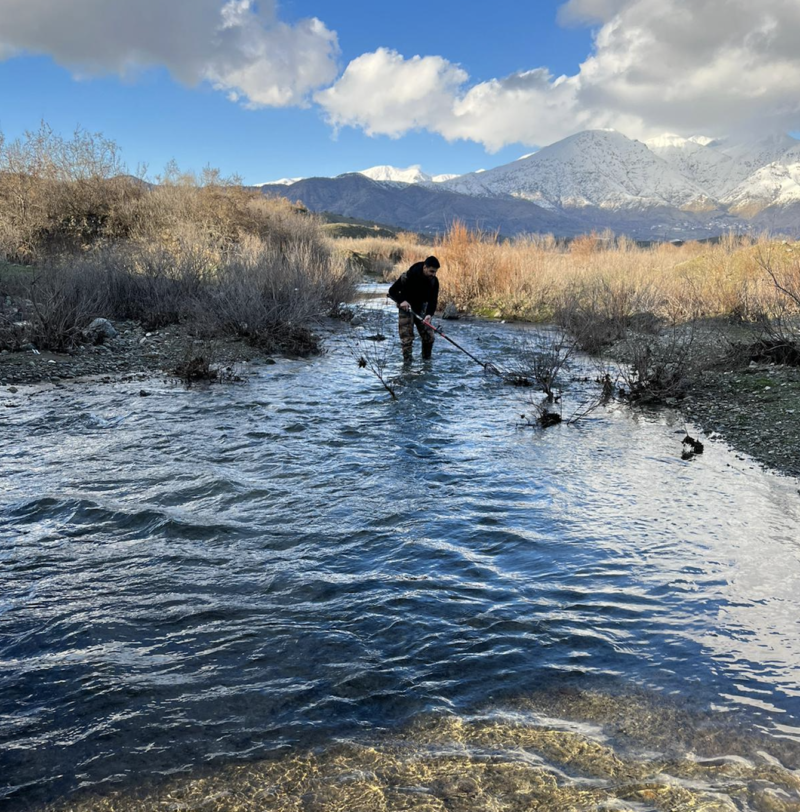
Dr Kaya fishing in the icy lower drainage of Sarım Stream. © Münevver Oral
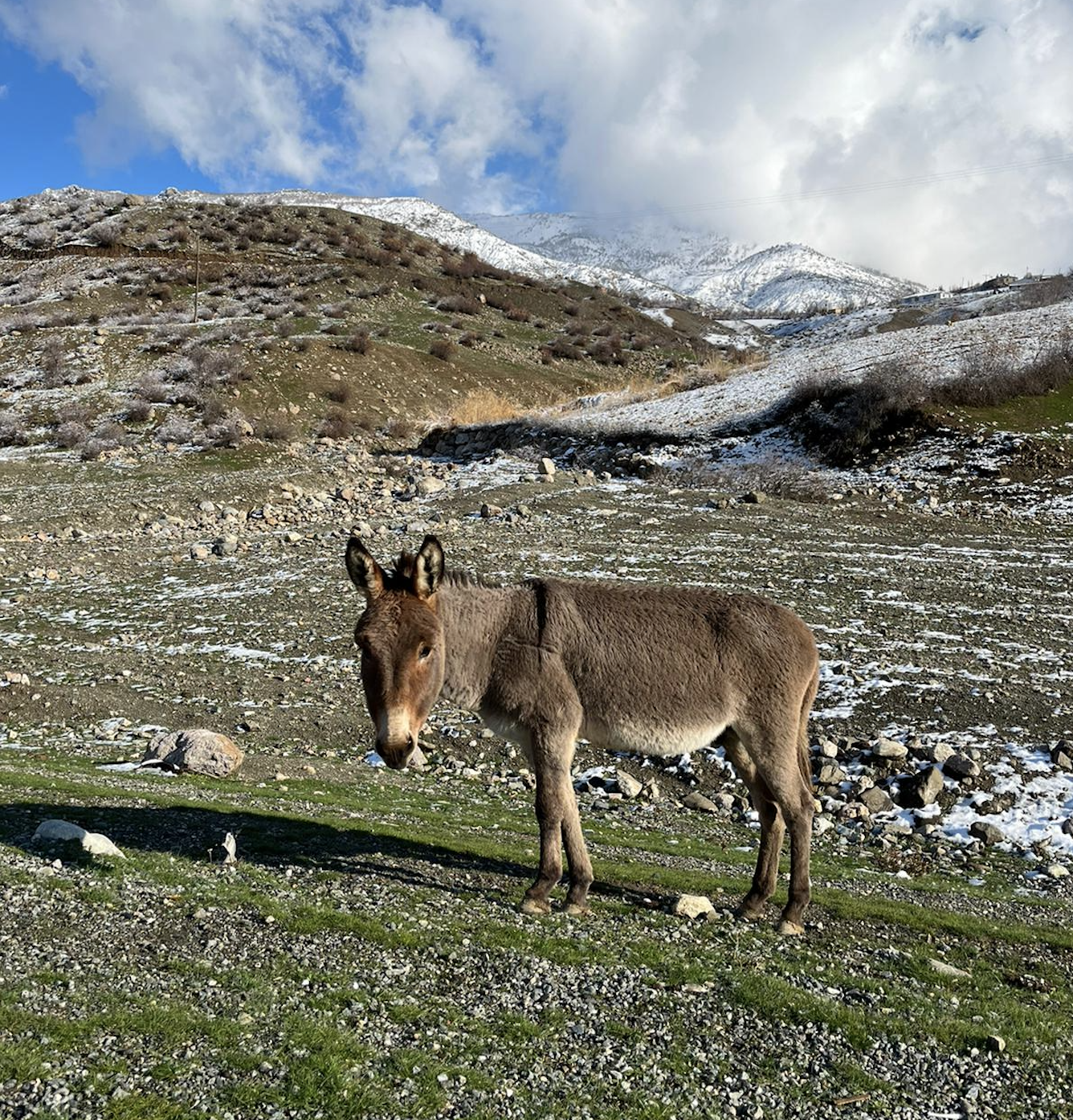
A local donkey. © Münevver Oral
What activities did you do during the expedition instead of the distribution assessments you were planning to do?
At the beginning of the expedition, we did not consider meeting with the district governors, due to time limitations and the priority of the range assessment. But, due to the extreme weather conditions, we focused on awareness activities throughout the entire trip.
We first started our meetings with the local governors and mayors in Sason (Batman), Kulp (Diyarbakir) and Lice (Diyarbakir) in the mornings. These districts were chosen based on the population density at the upper parts of the Batman Dam (Sason 30k, Lice 25k, Kulp 35k). In each of these meetings, we requested the local director of national education to join us to discuss the benefits of our activities for students and teachers, as well as ensure full collaboration by high school administrators. We carried out several seminars in high schools during the afternoons, and one seminar with a local NGO called SarimDer during the evening. Although being a small community, SarimDER is highly motivated to protect the precious fauna and flora of the entire valley, thus we received high interest by this community.
The seminar took more than 3 hours, with questions and explanations, and by far the most productive discussion of the entire expedition. Particularly, there are two highly motivated people, Emin Turhalli (a true nature lover – he lives almost fully organic) and Ahmet Inan (a lawyer volunteering for an NGO to help prevent the HEPP being established. Both of them are willing to do whatever it takes to protect the Sarim valley.
We met with representatives of TEMA, one of Turkey’s biggest wildlife protection NGOs, during the evenings in both Batman and Diyarbakir. We are still in touch with their representatives on a local scale and will be publishing a leaflet in the area to increase awareness of the loach rediscovery and the threats to the Sarim and Han streams. Once this is out in the surrounding states, TEMA will publish on their social media channels, which should give us a third round of publicity nationally (fingers crossed!).
How were these activities received by the people who came to listen to you speak?
The local director of national education, high school students and teachers were our audience during the seminars, which were between 50-80 people, up to 150 at the maximum.
Students were very curious and keen to learn more about the loach, and seeing their villages via drone received huge attention! We showed them recent photos of plastic pollution in the stream and asked them to guess where it was. Some were from the area and guessed the answer easily. This little game triggered their interest on how these pollutants ended up in stream and some told us they will be more careful of how they treat the water in the future.
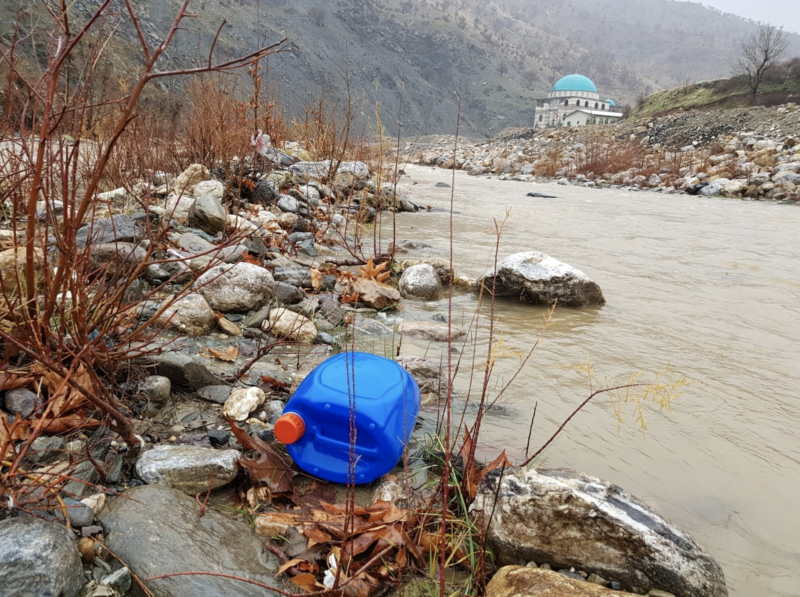
Plastic pollution in the upper Han stream. © Münevver Oral
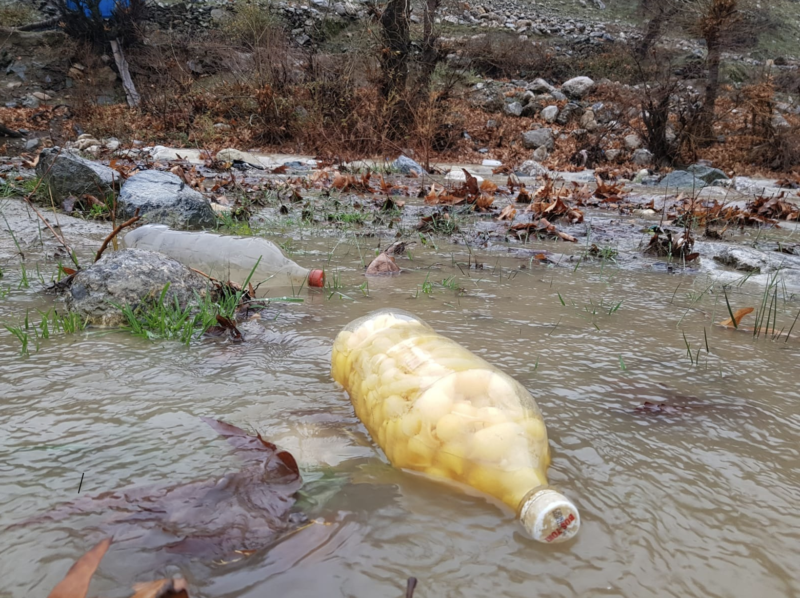
Plastic pollution in the upper Han stream. © Münevver Oral
Teachers asked for further readings and we sent our presentation to every school. At the end of the seminars, we made a deal with the students to spread the word about the loach and what they learned during the seminar . Given their interest, we hope that they will spread the word about the rediscovery and how to protect the ecosystem.
How do you think your awareness raising has changed people’s attitudes to the Batman River loach, and the local streams?
We framed our discussions based on the threats to the ecosystems in a much broader concept during the seminars, so we anticipate that young people will mostly change their attitudes towards illegal fishing, human-made pollution, HEPPs, and drought for the conservation of the ecosystems in long run.
Most of the young people didn’t know about ghost fishing. Through interactive talks with the students and NGOs, we anticipate that the seminars have changed their attitudes to the stream, the loach, and nature in general, in a much more responsible way.

Students and teachers of the Diyarbakır Lice high school listening during one of Dr Kaya and Dr Oral’s seminars. © Münevver Oral
What are your hopes on a local, national and international level for the Batman River loach?
Our rediscovery, the paper we will be writing, and the national and international news coverage should encourage local governors in Batman and Diyarbakir to protect the nature and ensure the sustainable use of the natural resources.
Unfortunately, there is no solid waste disposal plant in either of the districts that we carried out the expedition. Hazardous waste is currently hidden in locations decided by the local government, and the first step to protect both the soil and the water will be to built a specialist waste disposal plant in the area. HEPPs and dams constitute the major threats to the freshwater fish species, and we hope the construction of more dam and HEPPs in the area will be reassessed from an environmental point of view.
The biggest responsibility lies on the shoulders of the locals to protect their stream, valley and the nature accordingly. Throughout the expedition, we had a chance to visit Sarim valley and we were fascinated by the scenery of the landscape, where mountains were covered with snow and we could taste the best strawberries in our life, indicating the natural richness of the soil.
On the 14th December 2021, the minister of agriculture and forestry, Dr.Bekir Pakdemirli, announced plans for the protection of endangered species in Turkey. Taking this into consideration, we hope the Sarim and Sason valleys, including the Sarim and Han streams, will not face human-caused habitat degradation. This would ensure the Batman River loach’s continued existence in its very restricted habitat.
Internationally: our limited time in the area has indicated an enormous need for locals to be trained in the sustainable use of natural resources. This includes not only villagers and stakeholders but also local governors and officers. This is a perfect fit for an EU project. Cüneyt and I are keen to use the best available science and resources to protect the loach in its very limited habitat.
Last but not the least, we would like to thank everyone who made us feel home with their hospitality, namely:
Muhammed EVLICE (district governor of Lice, Diyarbakir)
Mustafa GÖZLET (district governor of Kulp, Diyarbakir)
Murat METE (district governor of Sason, Batman)
Naif KELES (local director of national education in Lice, Diyarbakir)
Fatih KAYA (local director of national education in Kulp, Diyarbakir)
Veysi BOZKURT (local director of national education in Sason, Batman)
Prof. Dr. Necmettin PİRİNÇÇİOĞLU (TEMA representative of Diyarbakir)
Mehmet Tahir ALTUĞ (TEMA representative of Batman)
Emin TURHALLI (The president of SarimDer association of cultural and natural heritage, NGO)
Ahmet İNAN (Diyarbakir Bar Association Lawyer)
Local people who saved us from the mud and local/national press
We caught up with Dr Kaya and Dr Oral after they returned from their December expedition to Batman – Diyarbakir.

